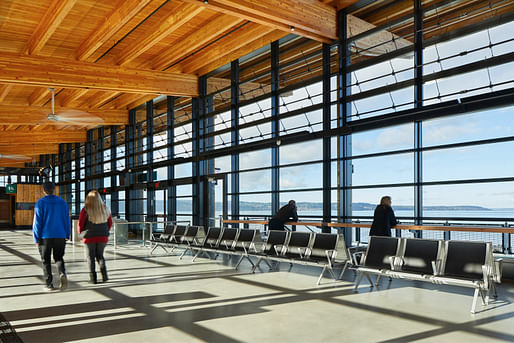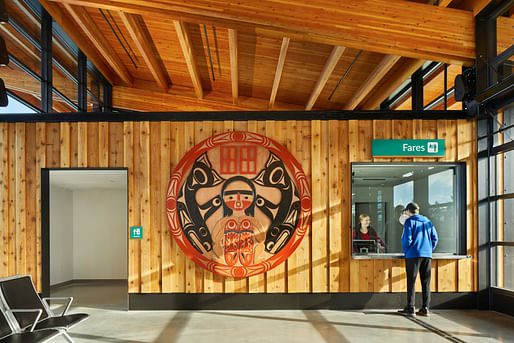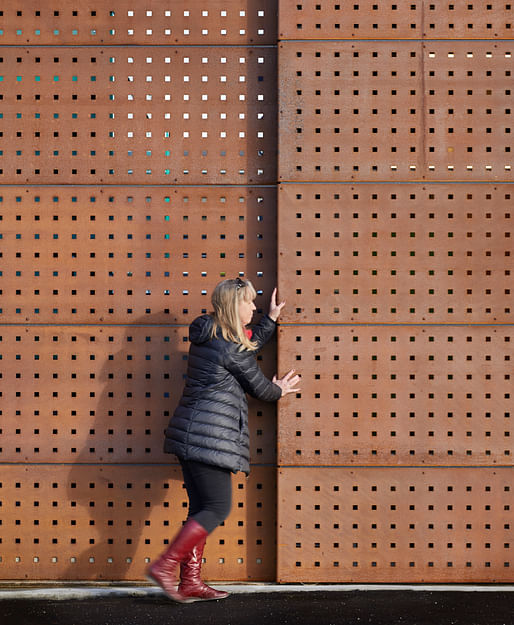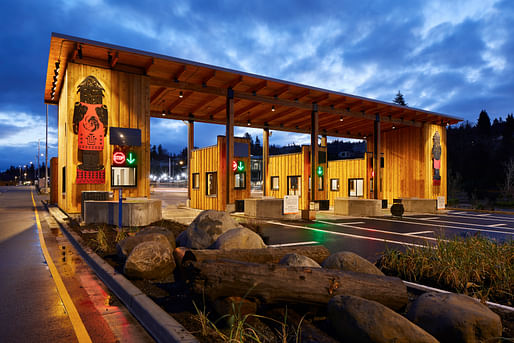
The LMN Architects-designed Mukilteo Multimodal Ferry Terminal has officially opened in Mukilteo, Washington. The two-story terminal building is inspired by the tribal longhouse built and used by the region's Coast Salish tribes. Designed in partnership with KPFF Consulting Engineers, the new structure replaces the previously existing terminal built in 1957.

"We listened intently and realized our project had to tell a story, one that had been partially hidden from the general public for years and covered under a Cold War fueling tank farm and a pioneer lumbermill before that," said Charlie Torress, Mukilteo Design Project Manager at Washington State Ferries (WSF) in a statement. "The group of designers asked to bring the project together embraced the goal of designing a new ferry terminal that honored and respected the history and values of the Coast Salish people. While only a transportation facility, it owes a debt to the generations of people who occupied this beautiful piece of land along the Salish Sea thousands of years before our time. The project is light on the earth and wrapped in cedar."

The Mukilteo-Clinton ferry route moves more than two million vehicles and nearly four million riders annually in conjunction with State Route 525, the major transportation corridor connecting Whidbey Island to the Seattle-Everett metropolitan area. The introduction of the new terminal provides more space for vehicle holding. It separates pedestrian and vehicle boarding with an overhead walkway for safer, more efficient loading, especially for people with disabilities.

"The Mukilteo Multimodal Ferry Terminal is the result of an intensive collaboration between the design, engineering, and contracting teams," said Howard Fitzpatrick, Principal at LMN Architects, in a statement. "But it would not have been possible without the inspiration and sense of mission that the team drew from our tribal partners. The historic significance of the site to the tribes, combined with its incredible natural beauty, inspired the team to produce a project that is imbued with a deep sense of history, while at the same time recognizing the vitality and forward-looking orientation of the area’s original inhabitants."

The terminal's longhouse form was conceived through close collaboration with numerous Coast Salish tribes. Full-height stretches of glazing fill the waiting room with daylight and provide views of the surrounding land and sea. Tribal motifs created by local Native American artists James Madison and Joe Gobin are displayed throughout the building, creating a sense of regional belonging and authenticity.

A new waterfront promenade connects a path from downtown Mukilteo that moves through the terminal and on to the beach. "The design team took the responsibility of building on such a historically significant and sacred site very seriously," Fitzpatrick continued. "While it is impossible to construct a modern facility without impacting the site, our goal was to minimize those impacts, to work with the sun, rain, wind, and views that have always defined this coastline to make a building that respects both its site and the culture that has occupied it for thousands of years."

3 Comments
I appreciate the simple yet bold relief of art in the work by LMN.
Excellent-looking project, right down to the details. More of these, please!
It's a damned shame the signage didn't live up to the architecture.
Block this user
Are you sure you want to block this user and hide all related comments throughout the site?
Archinect
This is your first comment on Archinect. Your comment will be visible once approved.